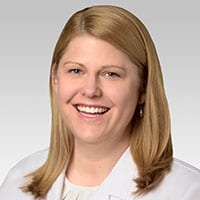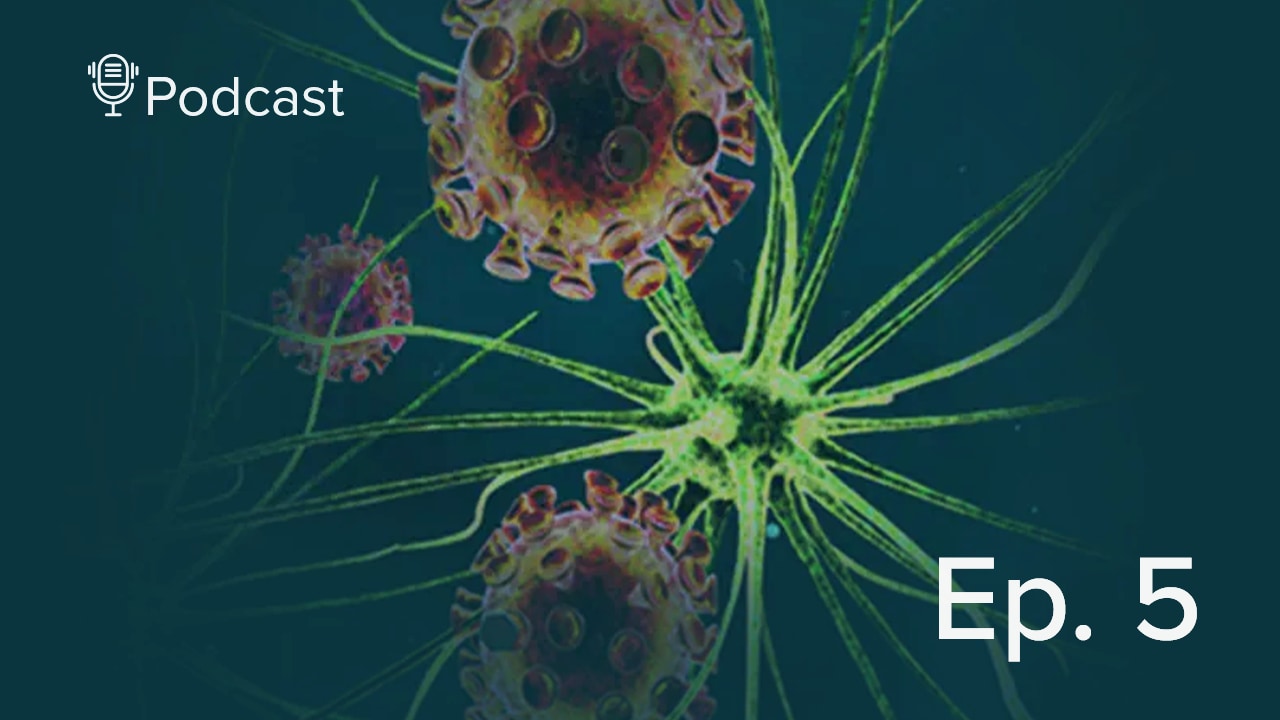This transcript has been edited for clarity.
Kathrin LaFaver, MD: Welcome, on behalf of Medscape Neurology. We will be talking today about highlights of the international meeting of the Movement Disorder Society.
I'm Kathrin LaFaver. I'm a movement specialist here in Saratoga Springs, New York. I will be talking with Dr Indu Subramanian, who is a clinical professor at UCLA and director of VBA Center in Los Angeles as well.
One of the most commonly asked questions when patients come to a visit is, what's new for Parkinson's disease? I was talking with a colleague last week who also attended the meeting, and she boiled it down to the message that carbidopa-levodopa is still our best medication.
With that as a preface, why don't you fill us in about what caught your eye as far as the scientific updates in the meeting.
Indu Subramanian, MD: We had a real host of abstracts. First, to go back to the meeting itself, there were a couple of really interesting lectures. If people can watch them later, Professor [Kailash] Bhatia won an award. His talk was around phenomenology and how important understanding movements is, looking at a patient, analyzing movement, and getting back to basics of the physical exam. That was something that was exciting.
Professor [Andrew] Lees showed some beautiful videos about the history of encephalitis lethargica to put in context of the COVID-19 pandemic. Those are two hot lectures. I think both of them are really about getting back to basics and not only relying on tests and digital technology, but also seeing the patient in front of you and the art of that patient interaction. That's a shout-out to that approach.
Time to Deep Brain Stimulation and COVID Vaccines
There is the sense that Sinemet or carbidopa-levodopa or Madopar, depending on where you live in the world, is still an oldie but goodie. There was an abstract that came out of the Toronto group that was talking about how the time to getting deep brain stimulation did not seem to be different if you were started on a dopamine agonist or if you started on levodopa.
I think this is another piece of information to make us feel a little bit more comfortable with using levodopa. There was a sense that we should be sparing levodopa and using agonists instead. Many of us have seen the side-effect profiles of agonists, including things like impulse-control issues, sleepiness, and various other cognitive side effects, like hallucinations.
The pendulum, I think, is still in the court of using levodopa. Certainly, even in the lifestyle approach strategies, we still think that levodopa is an important drug to replace dopamine and is important in the total prescription of approaching a patient. We're not talking about using exercise or diet instead of a medication. It's really about this integrated approach to using both. I think that was an interesting abstract.
Another abstract that was interesting is from Mayela Rodríguez-Violante and her group in Mexico. They looked at a number of patients with Parkinson's disease and the effects of the COVID-19 vaccines on motor and nonmotor symptoms. There did not seem to be a negative impact on symptoms. I think we can say — and I think many of us believe — that we can safely give these vaccines to Parkinson's patients and that the benefits of getting vaccinated outweigh the risk for worsening function.
LaFaver: Absolutely. I'm glad they did that because I know many patients have been concerned about the vaccines and possibly worsening their symptoms. That's good to know. I think you also had mentioned that there were new data on digital monitoring, biosensors, and markers. Would you speak toward updates in that realm?
Digital Tracking of Sleep and Steps
Subramanian: Yes. I think with the pandemic, there was this shift to telehealth, and then the sense that we can use various modalities to monitor patients; there are more and more ways to gather data on our patients. Our patients are actually quite interested also in learning about how their minute-by-minute or day-to-day variations can be tracked for self-management.
There were a number of abstracts on these technologies. There have been, again, some controversies on whether this is a useful thing. I was at a nonmotor meeting that Professor [K Ray] Chaudhuri and his team had put on in London, and I got to present on our wellness task force there. There were a couple of debates, and one of them was whether digital technology is useful or not.
Many of these data can be useful to globally understand the day-to-day things that patients have. One of the abstracts that I had highlighted was looking at how much sleep patients with Parkinson's get and how many steps they're getting compared with age-matched controls. I think it gives you some sense of how to guide patients, but I think it is still very, very important to connect with the patients.
The patients don't like it when all we do is gather data, put it into a database, and fill out electronic health records. I think many patients want doctors who listen and are there for them. They want that in-person touch or connection. We will never be replaced with just monitoring, but I think it's additional information.
What's your sense of that, Kathrin? I don't know how much you're using this or if you are excited about the advent of when we can print out large amounts of data on our patients from the week of monitoring before they come in to see us.
LaFaver: Yeah, I think it's important to not lose the forest in the trees, so to speak. It also depends on patient types and personalities. Some people really like doing these things and getting more objective data on their sleep. I would agree. I don't think it's necessarily needed to monitor people all the time.
It might be very helpful, especially when it's a little bit difficult to figure out when patients are in off states. Are they actually having side effects to a medication? I think there are many situations where getting more data is helpful. You mentioned in that paper that they, I think, captured a week in the life of Parkinson's. What was your takeaway or any messages from that?
Subramanian: I noticed that the patients with Parkinson's did not sleep very much, but the other people seem to sleep pretty well. I was envious of the control person, having just come back from being sleep-deprived from all the jet lag and multiple meetings when we hit the ground. I think the control average was about 10 hours of sleep. I was like, who is this person? I want to meet them.
I think that it is helpful. One thing that you and I have talked about before, Kathrin, is, for example, the effects of the menstrual cycle on motor symptoms and tracking — if you can track the period and these ups and downs, and then get a sense of the nonmotor and motor. We haven't really looked at that before.
I had just read something about migraine physicians learning these sorts of things and actually being able to embed lifestyle choices in the apps as reminders: You didn't sleep very well last night, try to sleep better today. You didn't eat right yesterday, let's try to build in more set meal times or hydration. They can track things that may be helpful for reinforcing some of these wellness prescriptions as well.
Spinal Cord Stimulation
LaFaver: Definitely some potential. I wanted to mention one abstract that caught my eye, which was also published recently as a brief report in The New England Journal of Medicine. The article is "Implanted System for Orthostatic Hypotension in Multiple-System Atrophy."
As you know, orthostatic hypotension can also be a very frustrating nonmotor symptom in Parkinson's disease as well as the atypical parkinsonian symptoms, such as multiple system atrophy. That's a very interesting proof-of-concept study.
I think many listeners have probably heard that spinal cord stimulation has been very successfully tested by several groups around the world for spinal cord injuries. People have actually been able to regain some motor function and to correct autonomic dysfunction. It's very interesting.
This group from Lausanne, Switzerland, performed thoracic spinal cord stimulation in a patient with severe orthostatic hypotension who was essentially bedridden. The spinal cord stimulation along with some physical therapy allowed her to be ambulatory again, which is amazing.
This is really early stages for this type of research, but it's exciting to see how technological advances along those lines might be helpful for some of our patients who struggle with this particular aspect.
Subramanian: That sounds really cool, actually, but it's an n of 1, I guess. We'll have to see.
LaFaver: Yes, it's proof of concept. It's been a hot topic in spinal cord injury for sure. More to come.
I think we're going to wrap it up. It was great to talk to you. Your enthusiasm is speaking for itself. It's very exciting, as you said, to go in new avenues and emphasize the control that many of our patients can have over their symptoms, and to focus on things that have traditionally not been emphasized enough, such as social connectedness, exercise, and so on.
Thanks, everyone, for listening. As you mentioned, virtual access to some of the lectures will be available soon for those who attended that.
Subramanian: Absolutely.
LaFaver: Thank you so much. Have a good rest of your day.
Follow Medscape on Facebook, Twitter, Instagram, and YouTube
Medscape Neurology © 2022 WebMD, LLC
Any views expressed above are the author's own and do not necessarily reflect the views of WebMD or Medscape.
Cite this: Kathrin LaFaver, Indu subramanian. Will Parkinson's Disease Therapy Move Past Carbidopa-Levodopa? - Medscape - Oct 13, 2022.
















Comments